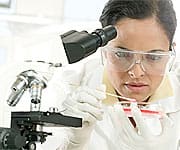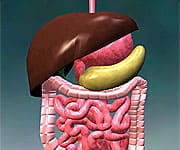Life Extension Magazine®
For most of my 60 years, I’ve dreamed of finding a medical treatment or cure that could improve humankind. It has been my mission and lifetime quest. Fifteen years ago, I rediscovered the reparative properties of bioidentical testosterone. It not only reversed my slide into old age, but also reversed my male patients’ diabetes. A hospital-supervised study soon followed, showing that testosterone replacement for men with diabetes was more important than oral diabetic medications, and for some, more important than insulin. What I could not imagine then was that almost every diabetes specialist, my affiliated national hospital chain, and the state-supervised health insurance carrier would brand me an “enemy of the state” and move to destroy my medical practice and credibility. The American Medical Association provided no support. This is the story of the inexpensive hormone that can displace up to $20 billion in direct pharmaceutical sales yearly—if only the truth becomes known. Historical PerspectiveIn the First World War, an unsubstantiated report alleged that a dead soldier’s testicles were transplanted into the abdominal wall of a man with gangrene. The story goes that the man recovered and did not require amputation. This story might have been considered whimsical, were it not for the work of the Danish physician Jens Moller, MD, between 1950 and 1984.1 Dr. Moller and approximately 250 other European doctors used injections of bioidentical testosterone to treat diabetes, gangrene, and related heart disease in more than 10,000 male and female patients. Dr. Moller’s enthusiasm overshadowed the observation that the high testosterone dosages used increased the incidence of heart disease in the women who were treated. This led to his public humiliation, a disbanding of the European physicians, and a misconception that testosterone is dangerous. Personal ExperienceWhen I turned 45, I “crashed” seemingly overnight, transformed from an enthusiastic, hard-working, physically potent man to a depressed, lethargic, and exhausted old man. My symptoms included night sweats so extreme that I had to take two showers every night. My colleagues had no idea what to do; one offered to admit me to the hospital to seek an answer. As a physician, however, I knew the hospital offered no answers.
I discovered the cause of this malaise from observations made by older patients in my gynecology practice. Two women told me that their 70-year-old husbands had the same symptoms. This compelled me to conduct “menopausal” laboratory tests on my own blood. The fortunate result is that I was one of the first men to be recognized as “andropausal” (experiencing symptoms of “male menopause”). With this newfound information, I asked my urologist about testosterone replacement. He told me that no one believed in testosterone for men, it was too dangerous, and that the laboratory tests were best explained by the many menopausal women I was treating in my practice—in other words, they had influenced my lab test results! I searched the literature, found a doctor who believed in testosterone replacement, and began testosterone replacement therapy in 1995. My life has never been sweeter since I began “drinking from my own bioidentical fountain of youth.” Pictures on my website testify to the dramatic changes in my physical appearance. At 42, I appear tired and wrinkled. At 52, I look muscular and lean, with a renewed enthusiasm radiating from my body and face. My female patients noticed the difference and were intrigued, as low-dose testosterone replacement therapy was a mainstay of my treatment of menopausal women. Worried about their husbands’ erectile dysfunction, lack of libido, and general health, they asked me if I would treat their husbands. I consented, and soon found myself treating “Joe,” a five-foot, ten-inch, 295-pound man with adult-onset diabetes. Case HistoriesAt the age of 48, Joe confided that he was worried about living long enough to see his daughter grow up. Once physically active, he could barely walk up a flight of stairs without becoming breathless. He knew that being diabetic severely affected his heart, and he could not lose weight, though he had tried.After performing a glucose tolerance test with insulin levels, I determined that Joe was an early diabetic. I began administering weekly testosterone injections and monitoring Joe’s blood sugar levels. During the first week of treatment, Joe’s blood glucose dropped into the normal range. He felt better and was able to walk up the stairs without difficulty. During the first month of treatment, Joe lost 20 pounds without even trying. The second month, he joined a gym and lost another 20 pounds. After the third month, Joe had lost another 10 pounds. After a year of testosterone replacement, Joe weighed 215 pounds—80 pounds less than at the onset of treatment. At 18 months, his repeat glucose tolerance test and insulin and testosterone parameters were normal. Now able to run on a treadmill for 90 minutes, Joe was clinically no longer a diabetic. When his wife received her biweekly testosterone injection, she reported that her husband’s bioidentical hormone replacement program with testosterone was more effective than prescription medications like Viagra® in enhancing his sexual function. In the hospital, “Hugh,” a 59-year-old insulin-dependent diabetic, was scheduled to undergo amputation of his finger. He had developed an infection from repeated glucose-testing lancets, which had eaten away the tissue all the way to the bone. In the hospital, Hugh was listless, unshaven, had no appetite, and displayed the ominous “Q-sign” (tongue hanging out the side of his mouth). As a family friend, I was beseeched to do something, so I offered an injection of short-acting testosterone. The hospital was in an uproar, as this was considered an unapproved therapy for diabetes. Hugh’s blood sugar dropped 50 points the first day after the injection, and he got out of bed, shaved, and ate his meals. With two more injections that week, his finger started to heal, and the amputation was cancelled. After Hugh returned home, his wife forbade any more testosterone injections. He no longer suffered from erectile dysfunction. Although Hugh died of cardiac disease four years later, he died with his finger healed and intact.
Clinical Success Leads to Hospital StudyArmed with this information, I approached my colleague James Sowers, MD, a professor at Wayne State University in Detroit. Dr. Sowers is considered one of America’s foremost authorities on diabetes. Dr. Sowers was intrigued by my observations, and we devised a pilot study for diabetic men in 1997. After baseline blood work and testing of their sex hormones (testosterone, estradiol, sex hormone-binding globulin), prostate-specific antigen (PSA), and glucose with insulin, the volunteers would be treated with monthly testosterone implants. They would be seen monthly for three months while on testosterone, and then for four months while off the testosterone injections. Testing occurred at regular one-month intervals. One limitation of standard medical care is that the physician rarely performs a glucose tolerance test and almost never performs the corresponding insulin measurements. Any deviation from optimal glucose tolerance suggests metabolic syndrome, pre-diabetes, and/or insulin resistance. When blood sugar is high, glucose molecules join hemoglobin, forming glycated or glycosylated hemoglobin in red blood cells, termed hemoglobin A1c (HbA1c). HbA1c levels greater than 6% indicate long-term elevation of blood sugar levels, which has been associated with increased risk of diabetic complications. In the 1997-1999 pilot study, 35 adult men with diabetes volunteered for treatment. Fifteen men were already on insulin, and 10 were considered “brittle” diabetics, as they used 80-120 units of insulin per day and were prone to precipitous drops in blood sugar called hypoglycemia. Since a hypoglycemic attack can result in coma or death, few doctors aggressively work to lower these patients’ blood sugar levels to achieve a preferred 6% HbA1c blood reading. Our initial evaluation showed that every man who was diabetic was low in testosterone. (Ten years later, Harvard scientist Eric Ding similarly noted that low testosterone was associated with an elevated risk of diabetes.2) Our laboratory measurements relied not only on the absolute number of total testosterone (reference range: 251-1000 ng/dL), but also on the measurement of bioavailable (that is, circulating and usable) free testosterone. Having no preconceived expectation, the study followed the insulin-requiring adult diabetics for three months. Most of the participants reduced their insulin requirements by half, without changing their hemoglobin A1c. Men who previously needed 120 units of insulin now needed 60 units; those who previously used 80 units now needed only 40. However, our next observation may be destined to change the treatment of diabetes forever. We found that the diabetic men on testosterone injections not only had better glycemic control, but also had no dangerous hypoglycemic attacks. Testosterone therapy also produced impressive results in men with adult-onset diabetes who were managing their condition with therapeutic diet and oral medications but not insulin. This group of 20 men comprised two groups. The two-hour glucose tolerance test with insulin showed that six of the men were “early” diabetics, with a pattern of hypersecretion of insulin and low testosterone. With testosterone replacement and a normalization of free testosterone levels, many of these men were able to discontinue their use of oral hypoglycemic agents and improve their HbA1c levels. For those who could not reach an HbA1c level of 6%, therapy was restarted with the most inexpensive generic hypoglycemic agents. These men on testosterone therapy were uniformly pleased with their reawakened vigor, the loss of inches from their waistlines, and improved workout performance. However, for the 14 men with adult-onset diabetes who were taking oral medications, their personal physicians had not realized they were in fact in the “burned out” stage of the condition, meaning that there was very little pancreatic insulin-producing capacity. The insulin part of the glucose tolerance test showed no fourfold increase in insulin value at one or two hours— instead, the numbers were flat and relatively unchanged. Therefore, these men—who represent more than half of adult men on oral agents—were taking expensive medications that were practically worthless for them. Some of the men were able to achieve better blood sugar control using testosterone alone, while some would eventually develop a need for insulin.
| ||||||||||||||||||||||||||||||||||||||||||||||||||||||||||||||||||||||||||||||||||||||||||||||||||||||||||
Testosterone Helps Avert Dangers of Diabetes Treatment
When “Charles,” an insulin-requiring diabetic on 100 units per day, came for a follow-up visit, I was surprised to see his finger-stick glucose at the low value of 37 mg/dL. When questioned, he told me that his internist had called him the night before, alarmed at the low glucose reading from a blood sample sent to a national laboratory. Charles had no symptoms, though he knew the symptoms of hypoglycemia and impending coma. I instructed him to reduce his insulin by another 10 units per day, and he agreed to do so. But why didn’t his blood sugar levels crash? According to the medical literature, including a report by Tiblin,3 testosterone sensitizes men’s cells to more readily admit glucose. In other words, it decreases insulin resistance in men. Therefore, whatever insulin is available in men works much more efficiently in the presence of testosterone. Of note, the female hormone estradiol works counterproductively for men, worsening insulin resistance.2,4 My continuing studies may help explain why the men I have treated with testosterone seem to be protected against developing hypoglycemia and its complications. It is possible that the secondary role of testosterone could be to accelerate not only the conversion of glucose to stored cellular glycogen in the blood, but also to reverse the process when needed, thus accelerating the conversion of stored tissue glycogen to serum glucose.5 This could explain my observation that diabetic men on testosterone injections seem to be protected from hypoglycemia-related coma and death.
Given this unique effect of testosterone, tighter blood sugar control can be more easily achieved. I have routinely lowered insulin-requiring diabetic men from HbA1c levels of 8-11% to a range of 6-7%. This improved long-term blood sugar control could potentially reduce morbidity, mortality, and health care costs by as much as 75%! I believe that widespread implementation of this therapeutic approach could mean fewer heart attacks, strokes, attacks of blindness, and men tethered to dialysis. Diabetic men can and should live longer and live better. Another interesting patient of mine was “Anthony,” a 50-year-old African-American male without insurance, employment, or regular meals, let alone medication. As shown in Table 1 above, his fasting glucose was 488 mg/dL and his HbA1c was greater than 18%. I immediately treated Anthony with twice the standard dose of testosterone and tracked his blood sugar daily. Over the next four months, I titrated Anthony’s long-acting insulin from 20 units to 90 units per day, and continued a sliding scale of regular insulin at approximately 20 units per day with meals. What I never expected was how quickly Anthony’s intracellular glycogen stores would normalize. In four weeks, his HbA1c dropped from 18 to 15.7%; at three months, it was 11%; and at five months, it was 7.4%.The Journal of the American Medical Association6 reported that in the best of circumstances, only 40% of insulin-dependent men could achieve an HbA1c level of 8% or lower. Yet I had driven the worst diabetic from a level of 18% to 7.4%. Best of all, the full potential of Anthony’s treatment had not even been realized, since it had been only five months. Anthony suffered memory lapses originating from the high glucose in his bloodstream and brain tissue. This is not unusual for uncontrolled diabetics. One evening, he injected 30 units of regular, short-acting insulin instead of his usual long-acting insulin. He called me and I advised him to eat his dinner and check his glucose levels every two hours. Anthony’s glucose testing never showed a value below 129 mg/dL. Another time, he awoke at 4 a.m., took his regular insulin, and went back to bed without eating. His morning glucose was in the range of 80-90 mg/dL. Remarkably, he suffered no blood sugar “crash,” coma, or severe symptoms.
As shown in Table 1, no matter how much testosterone was given to Anthony, his total testosterone never exceeded the upper limits of normal for men (1000-1200 ng/dL). He never developed polycythemia, a high red blood cell count that is the most common complication of continuous testosterone injections. (Its solution is simple: donate blood to the Red Cross once every four months.) I have the same goal as all doctors who treat diabetes: an HbA1c of 6.0%. In my office, with time and cooperation from my patients, almost all men are stabilized with an HbA1c of 6-7%. Glucose levels below 110 mg/dL are common in my patients with diabetes. Just last year, Dr. Dheeraj Kapoor7 published a study of 20 diabetic men reporting improvement in glycated hemoglobin (HbA1c), fasting blood glucose, insulin sensitivity, waist circumference, and blood lipid levels. Testosterone is an important and beneficial treatment for diabetic men—perhaps even more so than insulin. While insulin is applicable to 10% of men with type II diabetes, testosterone could be useful to almost 100%. Simple, effective, inexpensive, and safe, testosterone is truly man’s best adjunct for a long and healthy life—whether or not he has diabetes. Risks of Testosterone TherapyFor insulin-requiring diabetic men without contraindications, doctors can administer testosterone injections and follow patients’ improved glycemic control, reducing their insulin requirements accordingly. Not only will the improved glycemic control reduce morbidity (disease incidence), but testosterone replacement may produce beneficial effects for the heart, bones, memory, mood, sexual performance, and red blood cell production, which could reduce the risk of numerous conditions—not only heart attack, Alzheimer’s disease, and osteoporosis, but also dialysis-associated anemia. In documented cases, men receiving kidney dialysis required less anemia medication when they were receiving treatment with an anabolic steroid.8 If hospitals incorporated testosterone protocols for men undergoing dialysis, more than one third of costs related to anemia medications such as Epogen® might be eliminated. The risk of infection, bleeding, and potential allergic reaction to the sesame oil used as a carrying agent in the testosterone injection is small. The risks, expounded in the literature, are those related to prostate and testicular cancer. It is a contraindication to use testosterone in the presence of prostate cancer. Yet I have had only one male patient in the last 10 years who developed prostate cancer while on testosterone therapy. In fact, that patient was instructed to go back on testosterone by his doctor at the Mayo Clinic after only two years of observation post-surgery. A study by Dr. Abraham Morgentaler9 found that testosterone may be protective against prostate cancer. In a large study of men with low testosterone and normal prostate-specific antigen (4 ng/mL or lower), up to one in three had biopsy-proven prostate cancer. Men with total testosterone levels of 250 ng/dL or less had almost twice the incidence of prostate cancer compared to men whose levels were above 250 ng/dL. It is possible that inadequate testosterone levels in men are associated with a higher risk of prostate cancer! From a medical and health perspective, doctors should have the appropriate laboratory tests performed on all male patients over 35 years of age, especially those with suspected health issues. Without the HbA1c, a physician would not suspect that so many men have long-term elevations in blood sugar. For those who prefer to be tested before seeing a physician, blood tests can be ordered through the Life Extension Foundation. ConclusionThousands of years ago, it was recognized that castration took away a male’s manhood, both physically and emotionally. Today, hormones in our food supply (such as bovine growth hormone) and environmental xenoestrogens (synthetic substances that imitate the effects of estrogens, such as bisphenols and phthalates) may contribute to the dramatic decline in bioavailable testosterone and sperm count that has been observed in American men over the past 50 years. This same period has coincided with a meteoric rise in the incidence of diabetes and heart disease in the US. Optimizing testosterone levels may provide men with powerful protection against the risk of premature death and diseases such as diabetes, heart disease, osteoporosis, Alzheimer’s, and even prostate cancer. Edward M. Lichten, MD, FACS, is a Fellow of the American College of Surgeons and a Fellow of the American College of Obstetricians and Gynecologists. Dr. Lichten can be contacted through www.usdoctor.com or by calling 866-532-4254 or 248-593-9999.
| ||||||||||
| References | ||||||||||
| 1. Moller J. Cholesterol: Interactions with Testosterone and Cortisol in Cardiovascular Diseases. Berlin: Springer-Verlag; 1987. 2. Ding EL, Song Y, Malik VS, Liu S. Sex differences of exogenous sex hormones and risk of type II diabetes. JAMA. 2006 Mar 15;295(11): 1288-99. 3. Tibblin G, Adlerberth A, Lindstedt G, Bjorntorp P. The pituitary-gonadal axis and health in elderly men: a study of men born in 1913. Diabetes. 1996 Nov;45(11):1605-9. 4. Barud W, Piotrowska-Swirszcz A, Ostrowski S, Palusinski R, Makaruk B. Association of obesity and insulin resistance with serum testosterone, sex hormone binding globulin and estradiol in older males. Pol Merkur Lekarski. 2005 Nov;19(113):634-7. 5. Bergamini E. Different mechanisms in testosterone action on glycogen metabolism in rat perineal and skeletal muscles. Endocrinology. 1975 Jan;96(1):77-84. 6. Hayward RA, Manning WG, Kaplan SH, Wagner EH, Greenfield S. Starting insulin therapy in patients with type 2 diabetes: effectiveness, complications, and resource utilization. JAMA. 1997 Nov 26;278(20):1663-9. 7. Kapoor D, Goodwin E, Channer KS, Jones TH. Testosterone replacement therapy improves insulin resistance, glycaemic control, visceral adiposity and hypercholesterolaemia in hypogonadal men with type 2 diabetes. Eur J Endocrinol. 2006 Jun;154(6):899-906. 8. Gascon A, Belvis JJ, Berisa F, Iglesias E, Estopinan V, Teruel JL. Nandrolone decanoate is a good alternative for the treatment of anemia in elderly male patients on hemodialysis. Geriatr Nephrol Urol. 1999;9(2):67-72. 9. Morgentaler A, Rhoden EL. Prevalence of prostate cancer among hypogonadal men with prostate-specific antigen levels of 4.0 ng/mL or less. Urology. 2006 Dec;68(6):1263-7. 10. No authors listed. Type 2 diabetes in children and adolescents. American Diabetes Association. Diabetes Care. 2000 Mar;23(3):381-9. |





